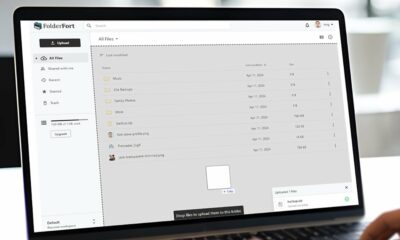SOCIAL
Musk Says Twitter Deal ‘On Hold’ Pending More Data on the Actual Number of Fake Accounts in the App
The action continues in the Elon Musk Twitter takeover push.
Early this morning, via, of course, a tweet, Musk announced that his proposed purchase of the company had been temporarily put on hold pending additional details from Twitter to support its claim that spam and fake accounts represent less than 5% of its users.
Musk later tweeted that he’s:
Still committed to acquisition
— Elon Musk (@elonmusk) May 13, 2022
But of course, many have speculated what this now means, and whether it could be an attempt by Musk to back out of the deal entirely.
Because the idea that just 5% of Twitter active user base are bots seems fanciful, especially given that Twitter has been reporting this exact percentage of fake accounts since its initial public offering, back in 2013.
Because in reality, Twitter doesn’t know. In its own reporting to the SEC, Twitter states that:
“There are a number of false or spam accounts in existence on our platform. We have performed an internal review of a sample of accounts and estimate that the average of false or spam accounts during the fourth quarter of 2021 represented fewer than 5% of our mDAU during the quarter. The false or spam accounts for a period represents the average of false or spam accounts in the samples during each monthly analysis period during the quarter.”
So Twitter makes this assessment based on a sample of its 229 million users, which, conveniently, has indicated that exactly 5% of its accounts are fake, every single time that it’s been run.
That also doesn’t explain why Twitter hasn’t removed the fakes that it’s detected each time – unless, of course, it has removed them, then a whole new 5% of accounts, fluctuating in actual number based on the platform’s overall growth, have cropped up in their place.
It seems questionable, right? Well, Twitter also notes that it could be wrong.
“In making this determination, we applied significant judgment, so our estimation of false or spam accounts may not accurately represent the actual number of such accounts, and the actual number of false or spam accounts could be higher than we have estimated.”
Twitter further states that it’s continually improving its capacity to detect and remove fake accounts – though again, even with these improvements, the number of total fakes has remained static at 5%.
There’s also this:
“After we determine an account is spam, malicious automation, or fake, we stop counting it in our mDAU, or other related metrics.”
So, you remove it from the platform entirely, or just stop counting it?
“We also treat multiple accounts held by a single person or organization as multiple mDAU because we permit people and organizations to have more than one account.”
Which, as an aside, is another potentially misleading calculation within Twitter’s numbers, though all social media apps use similar counting methods.
So how many fake accounts does Twitter have actually?
Various independent researchers have tried to estimate this. Back in 2017, a joint study conducted by researchers from the University of Southern California and Indiana University found that around 15% of Twitter’s user base were bots rather than people. In 2018, Twitter suspended or removed more than 70 million accounts which it had determined were fake. At that time, Twitter had 330 million monthly active users, which would suggest that around 20% of its user count were not actual, real people.
Independent discoveries of bot networks also belie Twitter’s 5% claim. In the wake of the 2016 US Election, for example, researchers uncovered “huge, inter-connected Twitter bot networks” seeking to influence political discussion, with the largest incorporating some 500,000 fake accounts. In 2019, Wired reported that bot profiles were still dominating political news streams, with bot profiles contributing up to 60% of tweet activity around some events.
On balance, I would say that Twitter’s 5% claim is probably not correct.
But does that mean that Musk can pull out of the Twitter deal entirely, if he can prove that Twitter has misrepresented this element?
Okay, first off, as noted, Musk has said that he’s still committed to the deal and is not looking for a way out. Some have questioned the truth of this, but on face value, we have to assume that Musk is simply looking for clarification, rather than an escape route.
If Musk did try to withdraw from his Twitter offer because its fake account stats were flawed, he’d still have a hard time, especially considering that Musk waived doing detailed due diligence on Twitter’s business, in order to reach an agreement faster.
As reported by The Wall Street Journal:
“Because Mr. Musk waived doing detailed due diligence on the deal, it could make it more difficult for him to back out over something like a discrepancy in the number of spam accounts. If he tries to, the company could attempt to force him to complete the deal under a legal protection called “specific performance,” though that maneuver is rarely successful in practice.”
So it probably wouldn’t be enough for Musk to back out – but then again, some have suggested that this may have been Musk’s plan all along, to wriggle out of his proposed Twitter takeover, for varying reason.
…and it’s far more likely that El*n, who lies *all the time* about his financial intentions, did this to unlock $8 billion of T S L A stock that he otherwise would have had limits on selling.
— Heidi N. Moore (@moorehn) May 13, 2022
That seems conspiracy-esque, but honestly, who knows what goes on in Musk’s head.
One thing’s for sure, we’re all learning a lot more about hostile takeovers, and securities laws relating to such efforts.
If Musk did seek to skip out on his Twitter takeover push, it wouldn’t be straightforward, with various regulatory processes in place to ensure such doesn’t happen, and various penalties that could be triggered as a result.
But maybe, as some have suggested, Musk could be using this as a negotiating tactic, in order to reduce his offer price for the app. Twitter shares are currently trading at well below Musk’s offer price, and if he could point to flaws in the company’s metrics, indicating bad faith on their part, that may give Musk more leverage to finesse the deal a little.
Each of these suggestions is effectively a ‘it’s possible, but…’ scenario, where there are various complexities built-in, which will most likely, eventually, see Musk becoming the owner of the company.
How many actual users Musk will have, and what that will mean for his growth projections, remains to be seen. And if his ambitious growth targets are now not possible, due to flawed data from Twitter, what does that mean for his financing, and securing capital from partners?
That’s likely what Musk is pointing to here – if Twitter’s not being honest in its calculations, Musk can’t properly estimate future potential, which limits his capacity to accurately value the company and attract outside investment for his bid.
So he should be able to lower it.
If I had to guess, I would say that this is Musk’s angle with this latest push, but it’ll also be interesting to see if we end up getting any real insight into Twitter’s bot problem, and what the actual figures on fake profiles could be.


















You must be logged in to post a comment Login